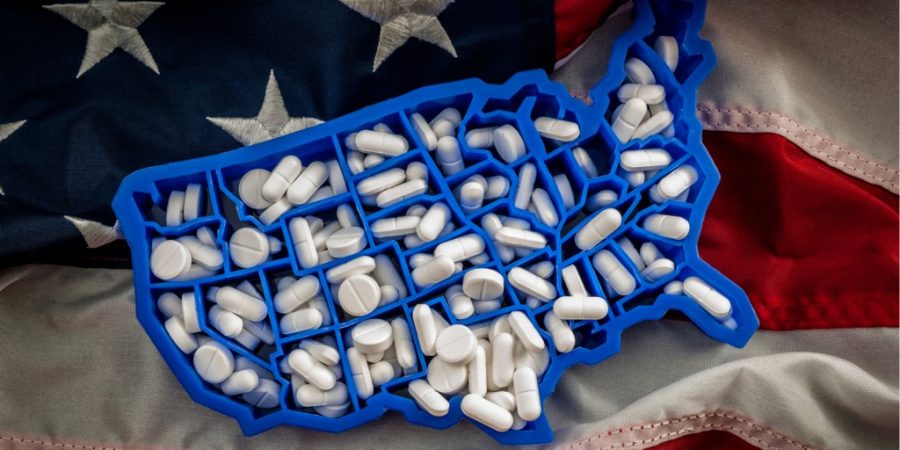
Opioid misuse among veterans continues to be a primary health concern. Recent estimates suggest that 595,000 veterans misuse opioids of some form, with the vast majority struggling with prescription painkillers. The intense withdrawal effects of these drugs can make it difficult for people to stop on their own, and many veterans will require outside intervention to break free from their addiction. And while the opioid withdrawal timeline can be deeply challenging, help is out there.
Medical detoxification can dramatically reduce the effects of opioid withdrawal and make it much easier to recover. With medical support, 24/7 observation, and a team of addiction treatment specialists working tirelessly to manage your symptoms, Heroes’ Mile can turn any veteran’s opioid withdrawal from a harrowing experience into a stable start on the path to recovery.
Table of Contents
How Opioids Affect the Brain


Opioids such as oxycontin, morphine, heroin, and fentanyl produce powerful effects on the brain. They relieve pain, promote relaxation, and can deliver powerful feelings of euphoria. But this comes at a cost—repeated opioid use causes the brain to adjust and adapt to the new substances. Over time, that means increased tolerance and intense withdrawal symptoms if you suddenly stop. The opioid withdrawal timeline can have many varying, unpleasant symptoms, which can make it difficult for veterans to quit opioids on their own.
In addition, repeated opioid use will cause structural changes in the brain’s reward network. These brain changes can impact your ability to choose to stop using opioids without outside help. Choosing to seek treatment and achieving abstinence will help your brain to heal from these changes, allowing you to regain control of your life and leave opioids behind for good.
The Effects of Opioid Withdrawal
Through the course of a substance use disorder, the brain adapts until opiate use feels “normal.” When drug use suddenly stops, you rebound in the other direction and experience the opposite effects, namely the opioid withdrawal timeline. Instead of pain relief, you feel intense discomfort. Anxiety takes the place of relaxation, and euphoria becomes a sense of overwhelming dread.
Common opioid withdrawal effects include:
- Excessive sweating
- Shakes or tremor
- Goosebumps
- Elevated heart rate
- Restlessness
- Bone or joint aches
- Anxiety or irritability
- Runny nose, tears, or sneezing
- GI upset, such as stomach cramps, nausea, or diarrhea
These physical symptoms are frequently accompanied by intense cravings for opioids and psychological symptoms like a loss of hope or feelings of depression. The terrible effects of withdrawal are often enough to make people return to their substance use, creating a destructive downward spiral that is hard to break free from on your own.
The Opioid Withdrawal Timeline


The stages of opioid withdrawal are similar for everyone, though some people may not experience certain symptoms. Several factors dictate the intensity of withdrawal and the exact timing of experiencing these effects, such as the duration of your opioid use and the specific opioid you used.
Eight Hours after Last Use
Withdrawal effects typically begin about eight hours after you’ve last taken an opioid. This marks the beginning of the opioid withdrawal timeline. Symptoms are mild at first, and you may feel irritable, chilly, and begin to crave opioids. As you continue to get farther and farther from your last dose, symptoms will begin to increase in intensity and become extremely uncomfortable.
One Day after Last Use
After a full twenty-four hours, you are beginning to feel the intense effects of opioid withdrawal. By this point, most people are experiencing joint aches, sweating, and a racing heart. You may have trouble falling asleep and toss and turn when you get into bed. People commonly experience a runny nose, excessive yawning, and may have a fever. While day one is far from the worst day of opioid withdrawal, many people fail to make it through this stage.
Three Days after Last Use
Day three is widely considered the worst day of the opioid withdrawal timeline. At this stage, most people are experiencing worsening of all the effects from the previous days, but are now experiencing diarrhea, stomach cramps, depression, and vomiting as well. If you have made it this far, you can expect your symptoms to begin to improve rapidly over the next several days.
One Week after Last Use
A week after last use, most people are starting to feel better. You may have lingering symptoms for up to another week, but they are nowhere near the intensity that you experienced in the early days after stopping opioid use. Significant drug cravings and psychological symptoms may still be present–most people hoping to achieve recovery begin inpatient treatment about this time, helping them to manage these symptoms in pursuit of long-term abstinence.
How Medical Detoxification Can Help
The opioid withdrawal timeline can make seeking treatment frightening, but current medical treatments can reduce or even entirely remove the uncomfortable sensations of opioid withdrawal. Medications such as buprenorphine, benzodiazepines, and muscle relaxers treat both the symptoms and root cause of withdrawal, making detoxification much more manageable. Several studies have shown these drugs to be effective at helping people to successfully quit opioid use and shown them to be incredibly safe.
Seeking medical detoxification means that you do not have to suffer to achieve abstinence from opioids. Medical treatment professionals can provide around-the-clock support, making sure you stay safe and that your withdrawal symptoms are under control. Withdrawal from opioids may not be inherently life-threatening, but it is so uncomfortable and challenging that many people return to substance use rather than staying the course. And that is not a sign of weakness—many veterans, who have endured countless difficult events, still struggle to quit opioids on their own.
Treatment after Detox
While medical detoxification can get you through the painful early phase of abstinence, the brain changes associated with the disease of addiction remain. This is the very last of the stages of opioid withdrawal: building a life worth living outside of substance use.
Seeking inpatient treatment is the best course of action to ensure long-term abstinence, as it can teach you valuable tools to resist cravings and overcome the obsessive thoughts associated with drug addiction. Healing your brain from the consequences of prolonged opioid use takes time, and targeted counseling services can help you to reorient to a life free of drug use.
Veterans Serving Veterans at Heroes’ Mile
At Heroes’ Mile, we understand the specific needs of veterans like nobody else can. That is because we hire veterans, treat exclusively veterans, and focus on the specific mental health needs that arise from a life of service. When you are ready to start seeking help for your opioid use disorder, we will be there to help you every step of the way—from detox to inpatient treatment, to outpatient treatment and beyond.
You do not have to let addiction be the end of your story. With the help of Heroes’ Mile, you can achieve recovery and start living the life you choose. If you’re ready to find support for quitting opioids, call our admissions specialists at 888-838-6692 or ask your questions online.
The post The Opioid Withdrawal Timeline and How Detox can Help appeared first on Heroes’ Mile Veterans Recovery Center.
Source
Original Author: Heroes’ Mile

